I only ever really get out in summer, so I've seen very little of my favorite Seattle-area stomping grounds in winter. But when we abandoned Darwin Day festivities early, we decided to have a wander down by Juanita Bay. It wasn't peeing down rain and we were close by.
This summer, I'll take some comparison shots so you all can see the stark difference between winter and summer, but for now, we'll just have a bit of a photo essay on one of my favorite places.
Believe it or not, some trees are already budding:
Getting a head start on photosynthesis, I see. Some trees up here have figured out that the chances of a hard frost after February are about nil and sun in short supply, so they rush things.
Trees I've only seen decked in foliage look quite different bare:
Normally, I don't get much chance to see the lichens and mosses that grow on them. But without all those leaves in the way, matters become simpler:
There's an extraordinary beauty in that. I think one of my projects this year shall be figuring out just what those humble plants adorning the trees are. They have a story to tell, but I haven't yet learned their language.
(Which brings me to one of the things the microbiologist I was chatting with at the Darwin Day shindig was saying: science is like a language. When he encounters people who believe they can never speak it, he asks them if they think they'd be able to speak Mandarin Chinese after several years' study. Yes! There ye go.)
About the only green thing was the English ivy infesting one of the trees:
Well, that and the moss. And some evergreen plants here and there. The Emerald City never completely loses her emerald hue.
These were all taken from a boardwalk through the wetlands that dead-ends at Juanita Bay, which is at the north end of Lake Washington. It's a beautiful and inspiring place, but if you get there round feeding time, you may find yourself staring at nothing but duck's arses:
And some amorphous white blobs who, with the help of 10x optical zoom and when they'd finally lifted their heads from beneath their wings, turned out to be swans having a bit of kip in the bay:
Do you know, I think this is the first time I've ever seen swans in the wild. I've encountered domesticated ones a time or two. I hear from Jerome K. Jerome and P.G. Wodehouse that they can be right bastards, but these just floated serenely and looked nice. They remind me of my cat, who also looks serene and nice up to the moment she explodes into homicidal violence. Unlike the swans, she has never been caught floating.
On the way back, we passed a field of cattails that charmed me immensely:
And this tree, growing very oddly, with mosses all over it:
A few moments later, as we proceeded toward the boardwalk that leads around the head of the bay, we came across the first flowers I'd seen this season (not counting the hothouse ones planted miserably out to make signage look perkier):
They looked like berries till you got up close and realized they were buds. I'm not sure what sort of plant it is, but I likes it.
For my next shot of said plant, I'd just like to point out that it was near sundown on a thoroughly overcast day, and my camera still managed to shoot a macro shot so sharply with nothing but the ambient light that you can see the teeny tiny gnat perched on a leaf. If you click to embiggen, you shall see it on the leaf between the buds:
Have I told you lately that I love my camera?
Along the boardwalk, this rather magnificent moss-covered tree limb caught my attention:
Makes me like trees, that. Even though they get in the way of the geology.
Forbes Creek finds its way to Lake Washington in a series of streams through the wetlands here, and there's a wonderful little waterfall that's heard but not seen in summer. This time, I got a good gander at it. Feast your eyes upon this delightful little plunge pool:
I'm not sure what it's falling over just there. Perhaps a bit of shale. It's certainly not the typical soft sediment one normally sees round this part of the lake. Not much bedrock's exposed up this way, but there's patches here and there, along with glacial erratics.
A few steps farther on, we came upon this fascinating fungus:
No idea what it is. It's very yellow-orange, and it's shiny, and it looks pretty, and that's about all I can say of it. I need to start hanging about with local botanists.
At one point in its history, Juanita Bay had a large wooden pier sticking out of the end of it. All that's left now are rotten bits of pilings sticking up from the water, upon which perch some of the local birds:
I've never gotten a close enough look to identify them. They look like some sort of heron, but they're not blues:
They're almost always out there, making the pilings look taller. I tried to get shots of them swimming later, but by then the light was so bad and the distance so great that I only got blurs that suggest birds swimming and taking off like water planes.
For our finale, a view down Lake Washington from the head of Juanita Bay, with little bits of the old dock littering the shore:
One thing nice about being here in winter is the distinct lack of boats. But I'm excited for summer. The colors of the lake at sunset are just exquisite - azure and aquamarine and pale pure blues like Montana sapphire, all blended together under a salmon sky. Although this steel gray with just a hint of blue was lovely, too, and with the lake levels lowered to hold extra runoff from winter storms and the vegetation not rioting, there's quite a few fascinating things you'll see now that will vanish from view in the summer.
Have I mentioned lately I love it here?
17 February, 2011
Subscribe to:
Post Comments (Atom)
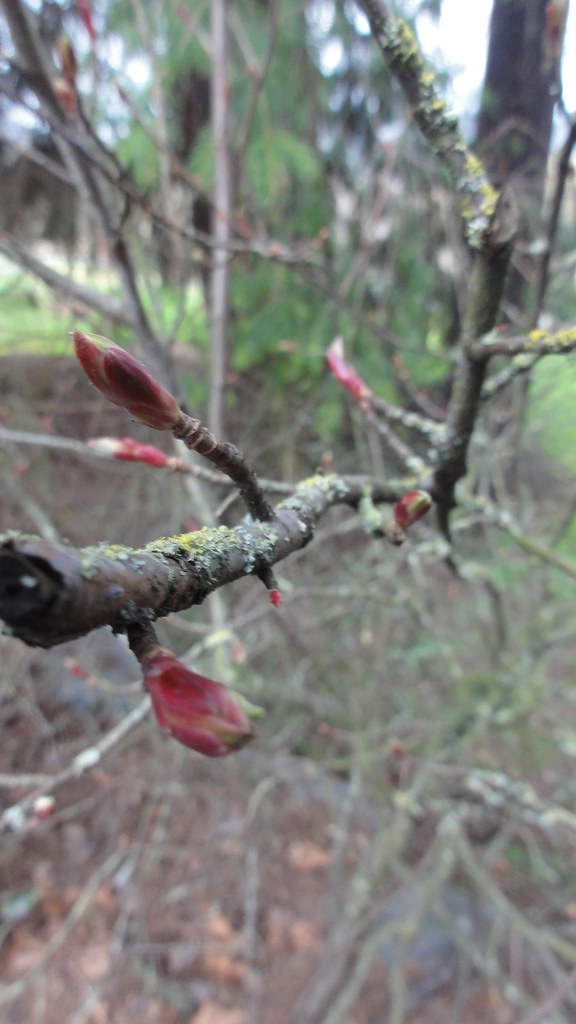

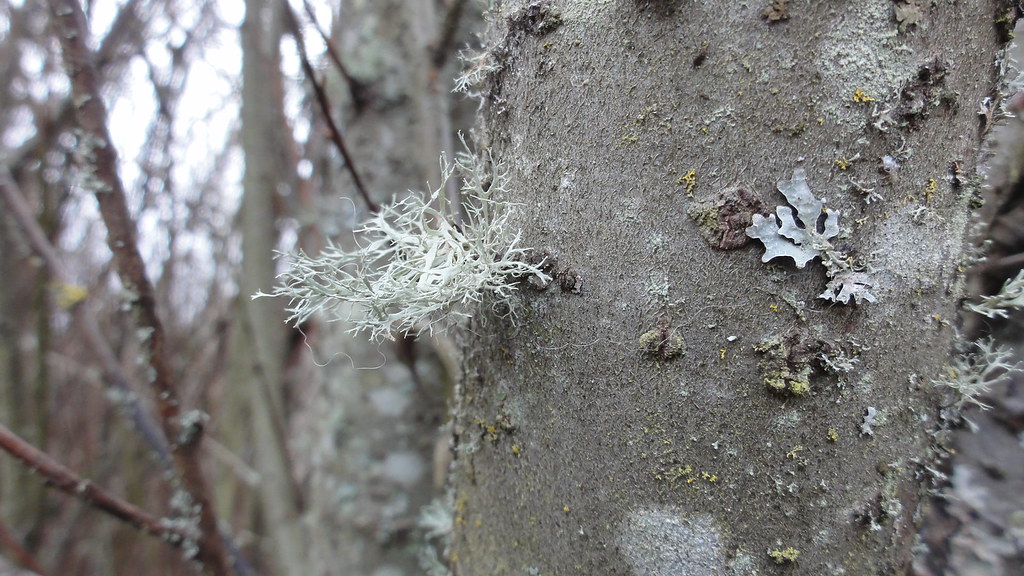


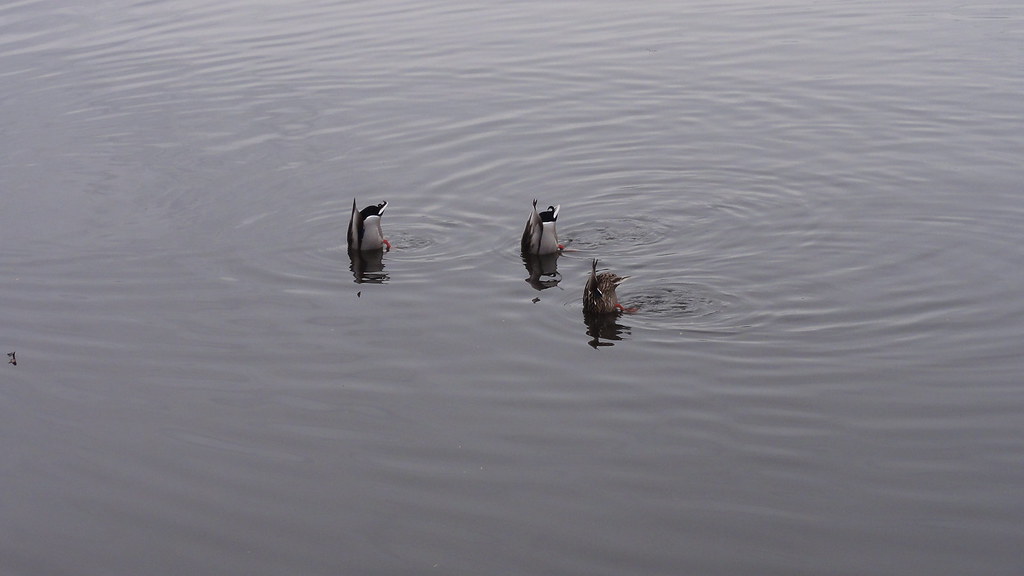
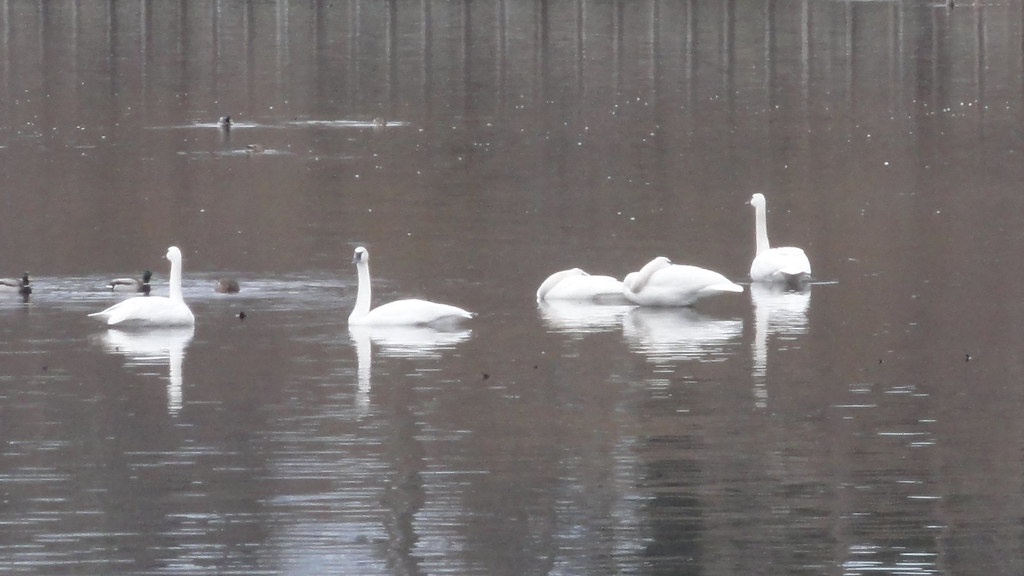
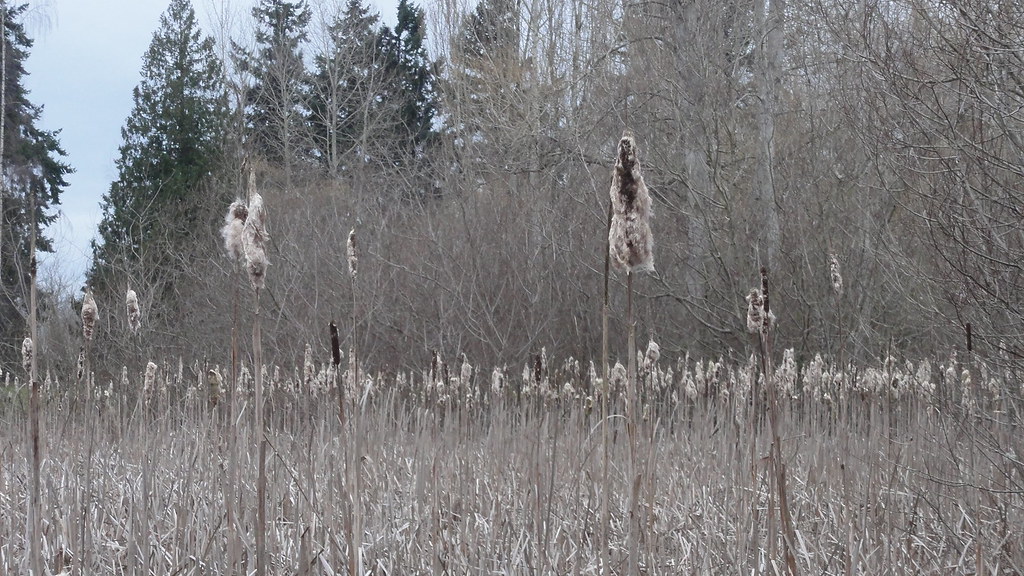
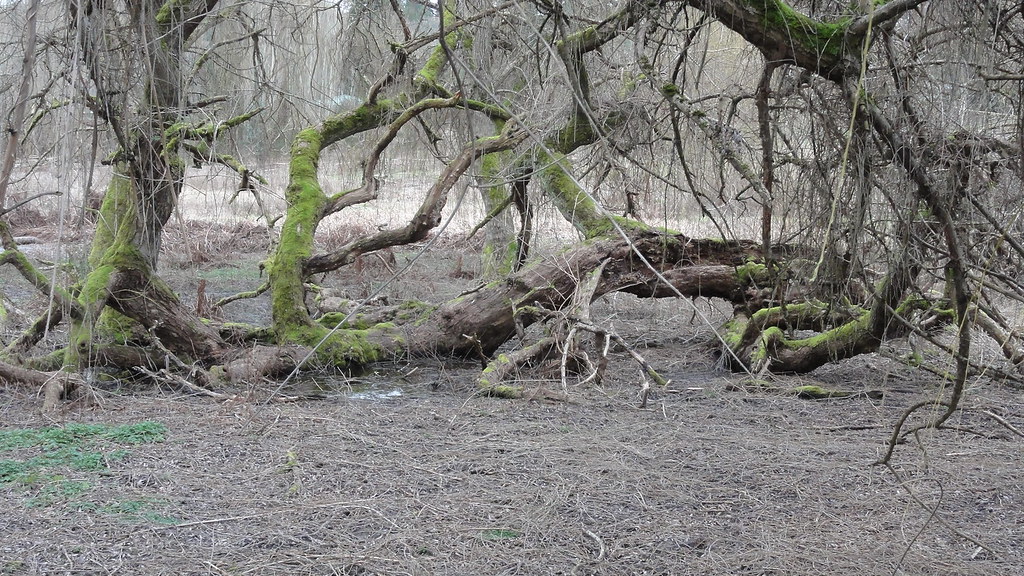
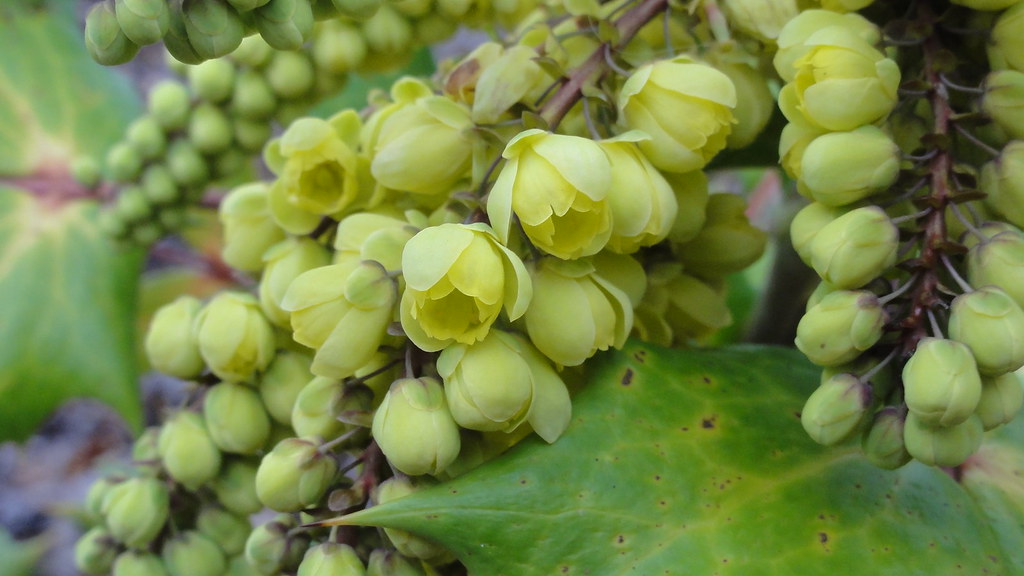
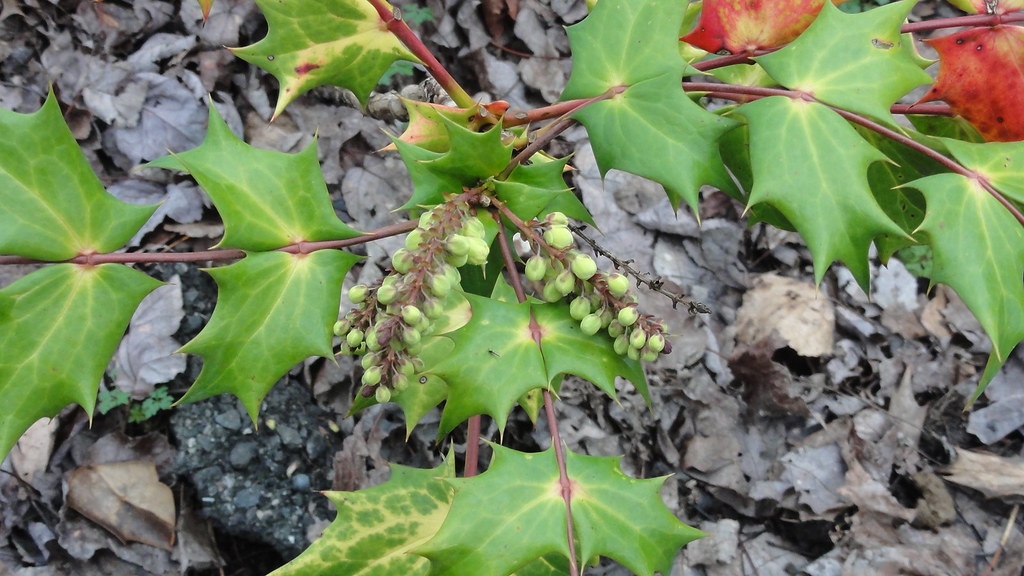
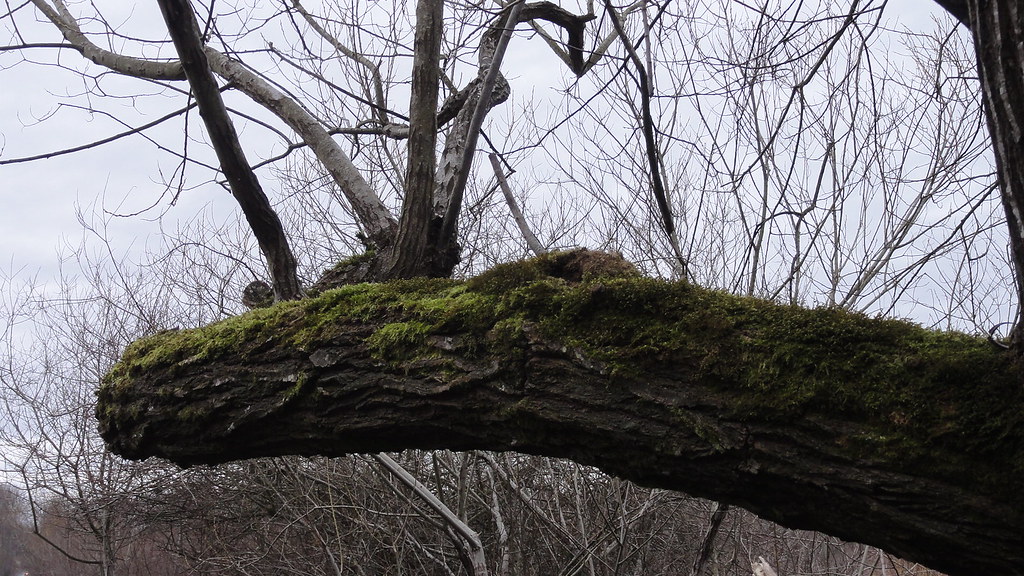

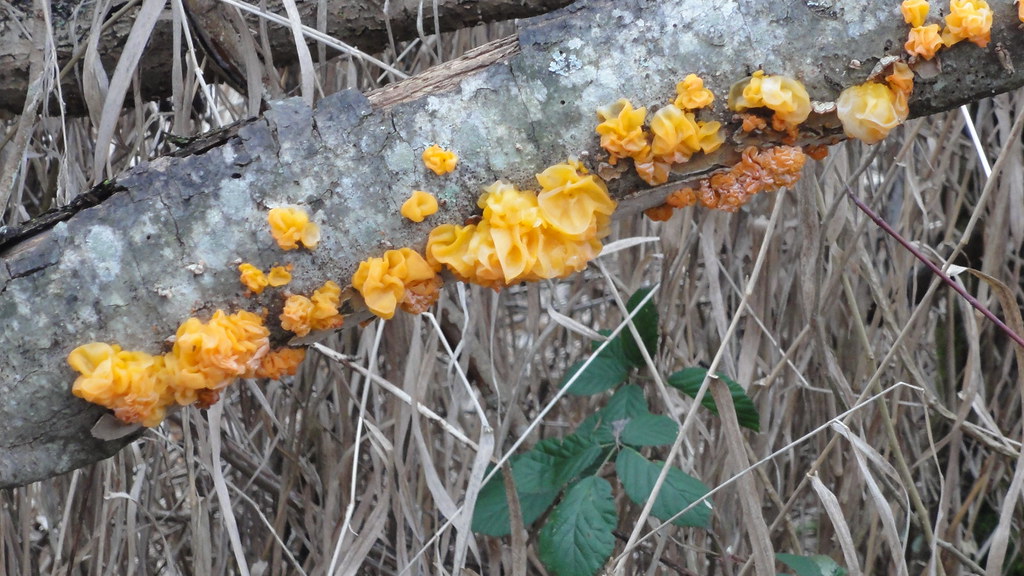


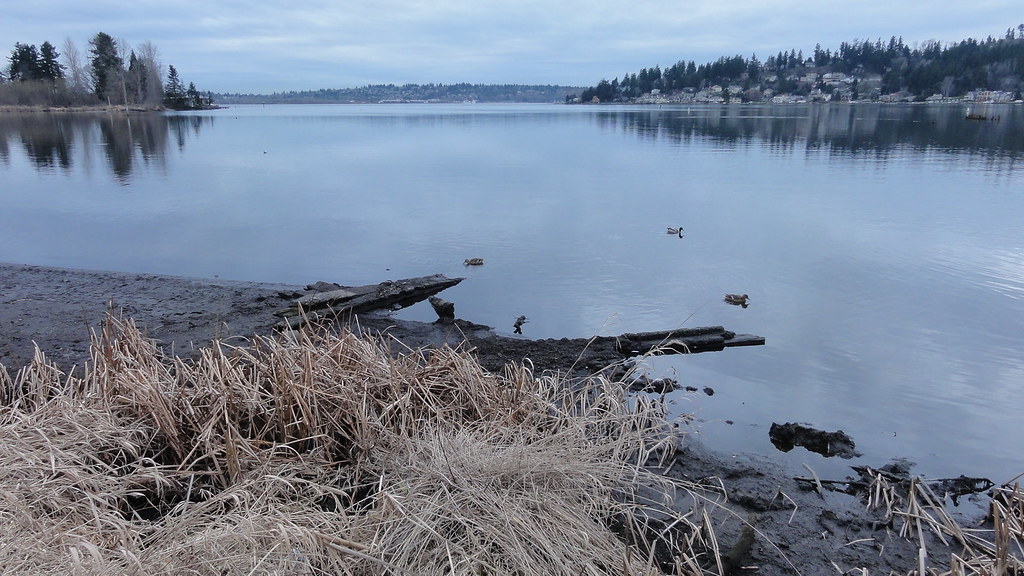







3 comments:
Lovely photos.
I can't tell for certain in these shots, but the big dark birds on the old piers are almost always cormorants. It's true in Minnesota. It was true in the Maritimes. Probably true on the west coast too.
The spikey leafed plant with the yellow flowers looks like some kind of mahonia. Their stems are woody and are a fairly bright yellow when split open. Some of the varieties feature in folk and native medicine as treatments for rheumatism.
I'd go with the cormorants, also. And tails are too long for any herons.
Post a Comment